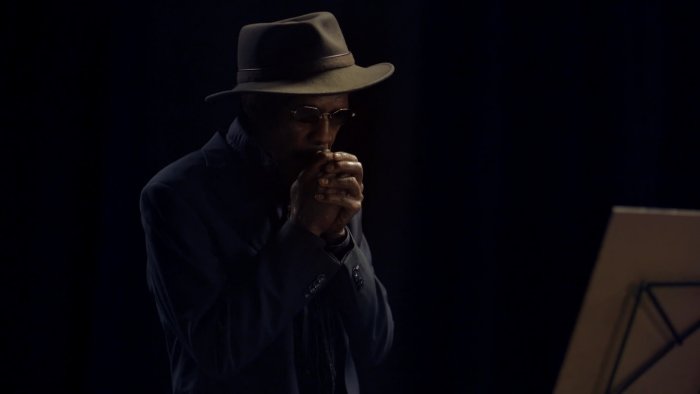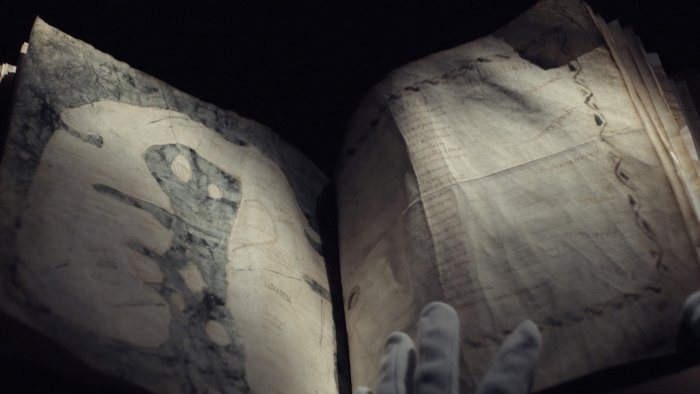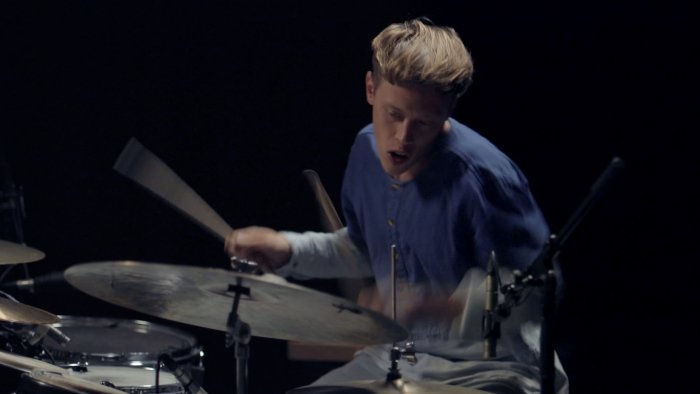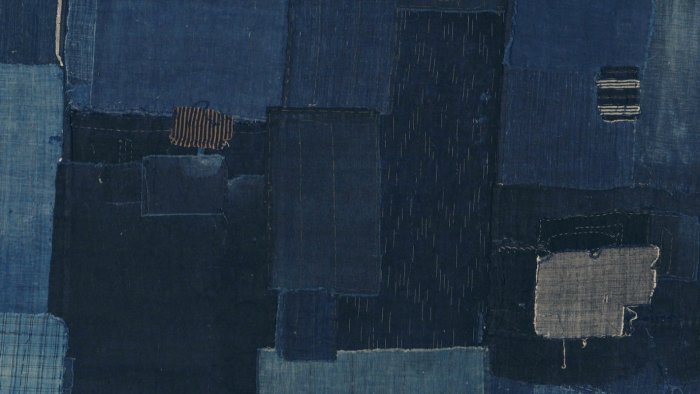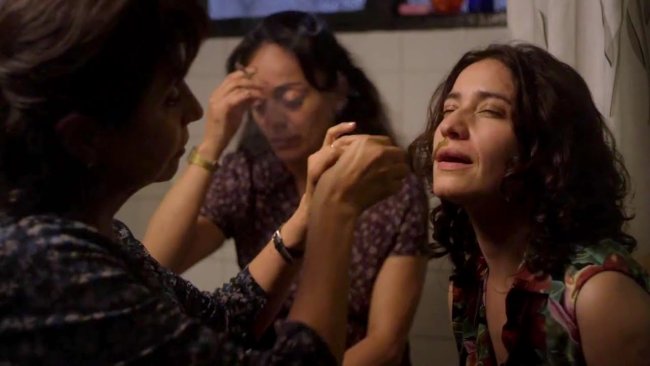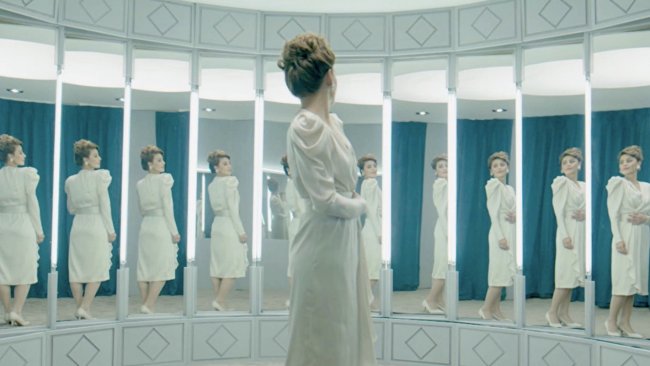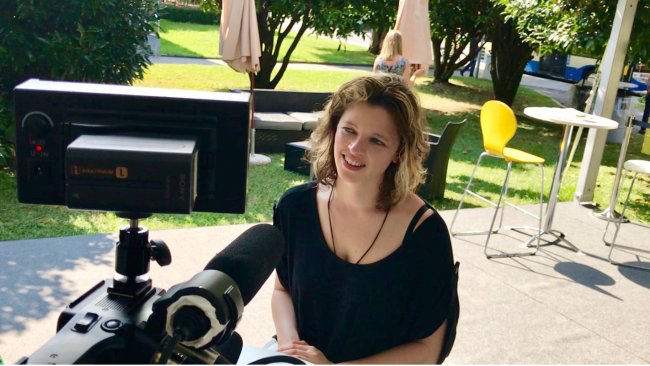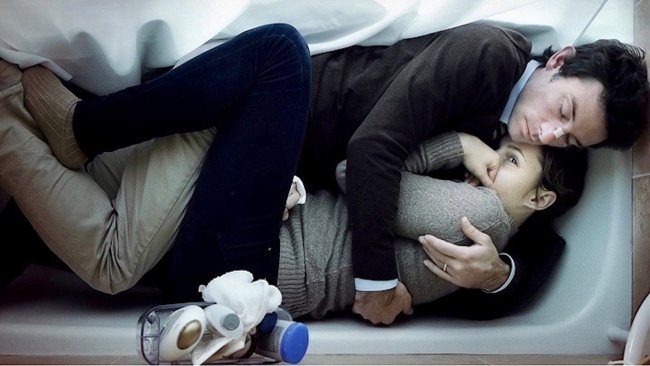Ultramarine
[…] A transversal museum collection becomes a powerfully meaningful connection of stories, each object telling a story of power, of exploitation, of domination.
[…] More than disrupting a hegemonic treatise, he builds a convincing non-Eurocentric conversation out of fragments and marginal elements: curious objects such as the automated puppet, or usual-then-invisible objects like the jeans and their indigo blue, constitute the alphabet of a historically informed language that reveals nothing but the main drive of globalization, which is colonialism and its aftermath.
Text: Giuseppe Di Salvatore | Audio/Video: Jorge Cadena
Podcast
Audio-Reading
Text: Giuseppe Di Salvatore | Reading: Julian Laybourne | Concept & Editing : Jorge Cadena
Find a list of all our Podcasts here.
Be it screened in a cinema theatre – its Swiss premiere at the Festival Videoex in Zurich – or as an installation piece in a museum – its world premiere in Toulouse last year (Le Printemps de septembre) – the visual poem Ultramarine simply must have the form of a film, for it perfectly exemplifies the art of synthesis. The synthesis of disciplines: history, geography, museography, poetry, music; and the synthesis of forms: music performance, poem reading, archive photography, moving images. The documentary and the creative aspects are tightly intertwined in a subtle work where every image is incredibly well composed (cinematography by Vincent Pinckaers) and the editing plays a fundamental role (Inneke Van Waeyenberghe for the image and Laszlo Umbreit for the sound).
Vincent Meessen’s interest in colonialism and its open and hidden forces is given here a highly mature output, through the thread of the colour blue. The textual layer is often accompanied by a screen made entirely of ultramarine – recalling Derek Jarman’s last filmic poem (Blue, 1993) – and mostly speaking of indigo blue, for example through an old photo where we see black slaves driven by a British colonist, producing said colour for textiles. Meessen has collected diverse objects from several museums in the region of Toulouse, which gain meaning through their being put together. A transversal museum collection becomes a powerfully meaningful connection of stories, each object telling a story of power, of exploitation, of domination.
Together with the editing, it is the voice of Kain the Poet (Gylan Kain, the former co-founder of the Black Arts Movement and forerunner of hip-hop music) that allows us to follow the blue line that collates an astrolabe, an ancient world map, a pair of jeans, the Pastel blue of Toulouse, and an automaton, under the sign of globalization, that being colonialist domination, seclusion and exploitation. In this respect, the 1844 automatic machine by Robert Houdin is an object of incredible force that serves as ideal example: with a synchronizing engine, a bird imitates the sound of a machine that is driven by a white woman who is accompanied by a black servant. The bird learns a “Leçon de chant” (the title of the work) from the human machine! Nature is subjugated by the white man who has enslaved the black man…
Meessen’s style here is very far from the analytical one of the decolonial studies. We can recognize an aesthetic that is neither postmodern nor deconstructive, but uses apparently marginal elements to (re-)construct a solid discourse. In retrospective, the marginal elements get an extraordinary exemplary force through the web of connections that this discourse is made of. More than disrupting a hegemonic treatise, he builds a convincing non-Eurocentric conversation out of fragments and marginal elements: curious objects such as the automated puppet, or usual-then-invisible objects like the jeans and their indigo blue, constitute the alphabet of a historically informed language that reveals nothing but the main drive of globalization, which is colonialism and its aftermath.
Now, (re-)writing history in a non-Eurocentric way cannot be the task of a purely linear narrative. Therefore, the constructive talent of Ultramarine notwithstanding, this work remains open on more than one aspect. The main bearer of this openness is certainly the dialogue between Kain the Poet and the drummer Lander Gyselinck – who seem also to create a bridge between very different generations. It is a dialogue of strong performances, where music explicitly expresses the power of improvisation. Moreover, Kain’s poetic words still play with ellipsis, and the quantity of his Pindaric connections will often leave us in a productive delay, calling for research and further interrogation. This speaks for a film that is ultimately difficult to describe, as it asks to be experienced. In addition, the final and almost imperceptible fading away of ultramarine – passing through indigo and Toulouse’s Pastel blue – into the white of the screen seems to mean exactly the ultimate address of the film to the public.
Info
Ultramarine | Film | Vincent Meessen | BE-FR-CAN 2018 | 42’ | Videoex Zürich 2019
First published: June 10, 2019
